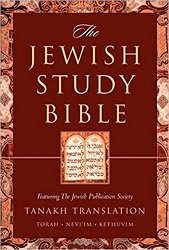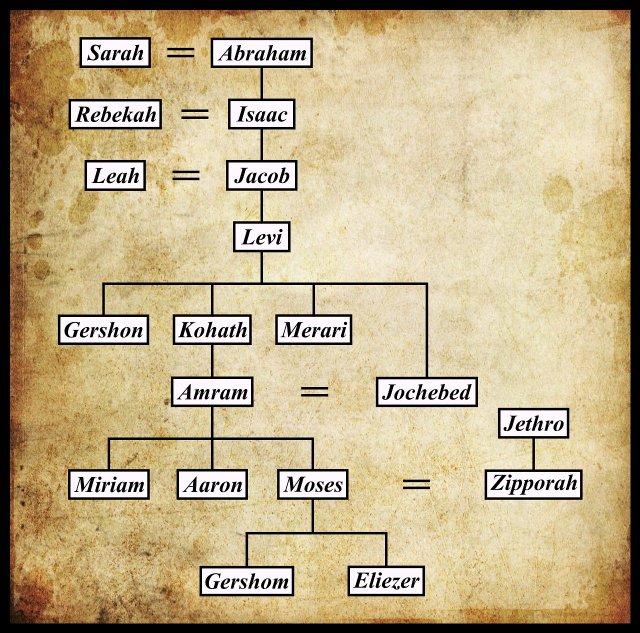Numbers and the Exodus

According to the Book of Exodus, there were in excess of half a million Israelites at the time of the Exodus:
And the children of Israel journeyed from Rameses to Succoth, about six hundred thousand on foot that were men, beside children. And a mixed multitude went up also with them; and flocks, and herds, even very much cattle. (Exodus 12:37-38)
In The Jewish Study Bible, the commentator, Jeffrey H Tigay, adds the following comment to these verses:

Six hundred thousand men, a round number; see also Num. 11.21; Num. 1.46 and 2.32 give the number more precisely as 603,550 (Num. 3.39 adds 22,000 Levites). According to Exod. 38.26 and Num. 1.46-47, these figures refer to men of military age, twenty and older. Adding women and children yields a population of at least two and a half million. Some scholars believe that in census contexts the word translated thousand (’elef) does not have numerical significance but means clan or squad (as in Num. 1.16; Judg. 6.15; 1 Sam. 10.19; and elsewhere), in which case the number of people need not be that high, but it is clear from 38.24-26 and other passages that individuals, not groups, are being counted. This number certainly accords with Exodus’ assertions that the Israelites in Egypt were extraordinarily prolific (1.7-12), though the land of Goshen and later the Sinai peninsula could not have sustained such a population. The number probably originated in hyperbole, perhaps as an expansion of the common 6oo-man military unit (14.7; Judg. 18.11; 1 Sam. 13.15; 23.13; etc.). Comparably, the Haggadah inflates the number of plagues from ten to fifty, and Arabian Bedouin often magnify numbers by factors of ten. Note also the thousand-fold population growth wished for by Moses (Deut. 1.11) and the 3-million- person army attributed to Kirta, the king of the city-state of Ugarit. (Berlin & Brettler 129)
Figures of two million and even three million are often cited. If two million people were to stand in a square, with each person occupying just 1 m2, each side of the square would be about 1.4 km long. Imagine how big an encampment such a multitude would form every time they halted. And on the march, the vanguard and rearguard of such a multitude could be separated by as much as 100 km. These statistics are hard to swallow—even for a Fundamentalist.
The image at the top of this article is a screenshot from Ridley Scott’s Biblical epic Exodus: Gods and Kings. This movie had several thousand extras, but CGI was obviously used to conjure up the immense multitudes required by the traditional story. Still, it gives a rather inadequate impression of two million people on the march.
But were the Israelites so prolific a race as to grow to such a size during the Sojourn in Egypt? Tigay cites Exodus 1:7-12 in support of this claim, but Deuteronomy 7:7 can be cited against it:
The Lord did not set his love upon you, nor choose you, because ye were more in number than any people; for ye were the fewest of all people: (Deuteronomy 7:7)
Tigay also mentions the theory that the Hebrew word ’elef, which is traditionally translated as thousand, really means clan or squad.

The Biblical scholar Paul Penley elaborates on this theory on his website:

If you study all the uses of the word ’eleph in the Old Testament, you find 4 possible meanings (all witnessed in Judges and 1 Samuel below):
1 A general reference to one thousand units of any number of objects such as chariots, horsemen, shekels, people, sheep, or goats (1 Sam 13:15; 17:5; 23:23; 25:2)
2 A general reference to a thousand soldiers in a military context (1 Sam 4:2, 10; 6:19; 13:2; 15:4; 18:7-8; 21:11; 24:2; 26:2; 29:2, 5)
3 A particular reference to a military company or unit (1 Sam 8:12; 17:18; 18:13; 22:7)
4 A particular clan or extended family unit that exists as a sub-group within tribes (Judges 6:15; 1 Sam 10:19)
If meanings #1 or #2 are meant in Exodus 12:37, then we should keep reading 600,000 men or 2 to 3 million people left Egypt. However, if meanings #3 or #4 are meant, then 600 family or military units left Egypt along with children and a crowd of folks with livestock.
The distinct reference to 600 units of men in Exodus 12:37 and then a mixed multitude with livestock in Exodus 12:38 suggests the 600 units are male military divisions distinct from the general population. In this scenario, each military unit represents about 10 men from extended families in each tribe. The total number of slaves would be about 6,000 fighting men and roughly 12,000 to 24,000 women, children, and others. That brings the 3 million slaves way down to a realistic 20,000-30,000 people. (Paul T Penley)
This makes much more sense. The subsequent passage at Exodus 38.24-26, which Tigay cites to prove that the 600 eleph refers to 600,000 individuals, may simply be a later addition, made when the original signification of 600 ’eleph had been lost.
If the original unadorned memory was that 600 families left Egypt in the Exodus, then even Penley’s estimate of 20,000 to 30,000 individuals may be excessive. According to A Hebrew and English Lexicon of the Old Testament (1906), ’eleph was used in a technical sense to signify family.

The House of Israel
If two and a half million people took part in the Exodus, where did they come from? Tigay cites Scripture in support of the claim that the Israelites were an extraordinarily prolific people during the Sojourn in Egypt, but does this claim stand up to scrutiny?
We need to know three things before we can make a final judgment:
- How many Israelites migrated to Egypt in the first place?
- How long did the Sojourn in Egypt last?
- How fast can small populations grow?
The answer to the first question gives us a figure for the initial population of the House of Israel when they first settled in Egypt. The answers to the second and third questions place a constraint on how large that initial population could have grown, even if the Israelites were extraordinarily prolific.
In the Bible, Israel is a name given to the Patriarch Jacob after he wrestles with an angel:
And Jacob was left alone; and there wrestled a man with him until the breaking of the day. And when he saw that he prevailed not against him, he touched the hollow of his thigh; and the hollow of Jacob’s thigh was out of joint, as he wrestled with him. And he said, Let me go, for the day breaketh. And he said, I will not let thee go, except thou bless me. And he said unto him, What is thy name? And he said, Jacob. And he said, Thy name shall be called no more Jacob, but Israel: for as a prince hast thou power with God and with men, and hast prevailed. (Genesis 32:24-28)
The Israelites, therefore, were originally the House of Jacob—a family, not a nation. They migrated to Egypt during a famine, when Jacob’s son Joseph was Pharaoh’s vizier:
And Jacob rose up from Beersheba: and the sons of Israel carried Jacob their father, and their little ones, and their wives, in the wagons which Pharaoh had sent to carry him. And they took their cattle, and their goods, which they had gotten in the land of Canaan, and came into Egypt, Jacob, and all his seed with him ... All the souls that came with Jacob into Egypt, which came out of his loins, besides Jacob’s sons’ wives, all the souls were threescore and six; And the sons of Joseph, which were born him in Egypt, were two souls: all the souls of the house of Jacob, which came into Egypt, were threescore and ten. (Genesis 46:5-6 ... 26-27)
At the start of the Sojourn in Egypt, the House of Israel numbered only 70 people. Even if we supplement this with wives, servants, retainers, hangers-on, etc, the total figure can hardly have been much more than 200.
This figure of 70 is supported by Exodus 1:5 and Deuteronomy 10:22:
Now these are the names of the children of Israel, which came into Egypt; every man and his household came with Jacob. Reuben, Simeon, Levi, and Judah, Issachar, Zebulun, and Benjamin, Dan, and Naphtali, Gad, and Asher. And all the souls that came out of the loins of Jacob were seventy souls: for Joseph was in Egypt already. And Joseph died, and all his brethren, and all that generation. (Exodus 1:1-6)
Thy fathers went down into Egypt with threescore and ten persons; and now the Lord thy God hath made thee as the stars of heaven for multitude. (Deuteronomy 10:22)
The Septuagint, a Greek translation of the Hebrew Bible, has 75 in Genesis and Exodus, but 70 in Deuteronomy. In the Acts of the Apostles (7:14) Stephen says that Jacob’s family numbered 75. I will leave the Fundamentalists to quibble over these trivial discrepancies, which do not worry me. See Not Just Another Book for further comment.

The Sojourn in Egypt
Different figures are given for the duration of the Sojourn in Egypt. Even the Bible seems to contradict itself on the matter:
And he said unto Abram, Know of a surety that thy seed shall be a stranger in a land that is not theirs, and shall serve them; and they shall afflict them four hundred years; (Genesis 15:13)
Now the sojourning of the children of Israel, who dwelt in Egypt, was four hundred and thirty years. And it came to pass at the end of the four hundred and thirty years, even the selfsame day it came to pass, that all the hosts of the Lord went out from the land of Egypt. (Exodus 12:40-41)
And God spake on this wise, That his seed should sojourn in a strange land; and that they should bring them into bondage, and entreat them evil four hundred years. (Acts of the Apostles 7:6)
Now to Abraham and his seed were the promises made. He saith not, And to seeds, as of many; but as of one, And to thy seed, which is Christ. And this I say, that the covenant, that was confirmed before of God in Christ, the law, which was four hundred and thirty years after, cannot disannul, that it should make the promise of none effect. (Galatians 3:16-17)
According to the first and third extracts, the Sojourn in Egypt lasted 400 years. According to the second extract it lasted 430 years. The fourth extract is a little more difficult to interpret. Here, Paul tells us that 430 years elapsed between God’s Covenant with Abraham and the giving of the Law to Moses on Sinai. But Jacob and his family went down to Egypt 215 years after this Covenant:
So Abram departed, as the Lord had spoken unto him; and Lot went with him: and Abram was seventy and five years old when he departed out of Haran. And Abram took Sarai his wife, and Lot his brother’s son, and all their substance that they had gathered, and the souls that they had gotten in Haran; and they went forth to go into the land of Canaan; and into the land of Canaan they came. And Abram passed through the land unto the place of Sichem, unto the plain of Moreh. And the Canaanite was then in the land. And the Lord appeared unto Abram, and said, Unto thy seed will I give this land: and there builded he an altar unto the Lord, who appeared unto him. (Genesis 12:4-7)
And Abraham was an hundred years old, when his son Isaac was born unto him. (Genesis 21:5)
And after that came his brother out, and his hand took hold on Esau’s heel; and his name was called Jacob: and Isaac was threescore years old when she bare them. (Genesis 25:26)
Then Joseph came and told Pharaoh, and said, My father and my brethren, and their flocks, and their herds, and all that they have, are come out of the land of Canaan; and, behold, they are in the land of Goshen ... And Pharaoh said unto Jacob, How old art thou? And Jacob said unto Pharaoh, The days of the years of my pilgrimage are an hundred and thirty years ... (Genesis 47:1, 8-9)
Do the maths. Isaac was born 25 years after the Covenant of which Paul speaks : Jacob was born 60 years later, or 85 years after the Covenant : Jacob went down into Egypt 130 years later, or 215 years after the Covenant. That means the Sojourn in Egypt only lasted 215 years. For a Short Chronologist like me, that is a much more acceptable timescale than four centuries.

Genealogies
Whichever figure we accept, we also have to take into account the genealogies. According to Exodus, Moses was a great-grandson of Levi, whose son Kohath is listed among those who went down to Egypt with Jacob. (Levi too went down to Egypt.) If we assume that Kohath was very young at the time, and if we accept the traditional figure of forty years for a generation, and if we also accept that Moses was eighty at the time of the Exodus (Exodus 7:7), this leaves 160 years for the Sojourn in Egypt.
Can we do better?
And these are the names of the sons of Levi according to their generations; Gershon, and Kohath, and Merari: and the years of the life of Levi were an hundred thirty and seven years. The sons of Gershon; Libni, and Shimi, according to their families. And the sons of Kohath; Amram, and Izhar, and Hebron, and Uzziel: and the years of the life of Kohath were an hundred thirty and three years. And the sons of Merari; Mahali and Mushi: these are the families of Levi according to their generations. And Amram took him Jochebed his father’s sister to wife; and she bare him Aaron and Moses: and the years of the life of Amram were an hundred and thirty and seven years. (Exodus 6:16-20)
Remember that Levi’s son Kohath is listed among those who went down into Egypt with Jacob (Genesis 46). Even if Kohath was a baby, and his son Amram was born at the very end of his life, and Moses was born at the very end of Amram’s life, this leaves only 133 + 137 + 80 = 350 years for the Sojourn. The figures of 400 and 430 years are contradicted by these genealogies—even when we bend over backwards to stretch out the Sojourn as much as possible. Again, I leave it to the Fundamentalists to try and reconcile these obvious discrepancies: the only way to do so is to assume that Kohath was born in Egypt at least 50 years after the migration from Canaan, even though it is explicitly stated that he was one of the 70 who went to Egypt with Jacob.
Adopting much more realistic figures—say, 25 years for a generation—we can reduce the length of the Sojourn to about 130 years, if not less.
Moving on to the Book of Ruth, we find the following genealogy for David:
Now these are the generations of Pharez: Pharez begat Hezron, And Hezron begat Ram, and Ram begat Amminadab, And Amminadab begat Nahshon, and Nahshon begat Salmon, And Salmon begat Boaz, and Boaz begat Obed, And Obed begat Jesse, and Jesse begat David. (Ruth 4:18-22)
Pharez (or Perez) was a grandson of Judah. He is listed among those who went down into Egypt with Jacob. His son, Hezron, is also listed among the 70 migrants who accompanied Jacob. The following three generations were born in Egypt. Nahshon was the leader of the Tribe of Judah during the Exodus, so he was obviously a grown man at the time. This genealogy agrees with that of Levi—more or less. If there were 25 years to a generation, and if Hezron was a newborn babe at the time of the migration, and if Nahshon was 55 years old at the time of the Exodus, the Sojourn would have lasted 130 years.
And it would not be too difficult to reconcile these genealogies with an even shorter Sojourn.
Population Growth
If there were about 200 members in Jacob’s extended family—the House of Israel—at the beginning of the Sojourn in Egypt, and if the Sojourn lasted, say, 130 years, how many Israelites would there have been at the time of the Exodus?
Over a relatively short period of time, population growth rate may be defined succinctly by the following formula:

This formula expresses the overall growth in population P between two points in time, t1 and t2, as an annual percentage of the initial population. For example, if an initial population of 100 grows to 1000 in 36 years, that an average increase of 25 extra people every year. As 25 is 25% of the initial population of 100, this is a Population Growth Rate of 25%, or 0.25, per annum.
According to the CIA’s World Factbook, population growth rates for the year 2017 ranged from as high as 3.83% (South Sudan) to as low as –2.79% (Cook Islands). For very small populations, however, much higher rates may be observed. For example, in 1790 the Pitcairn Islands were settled by 28 people: 9 mutineers from the Bounty, 6 Tahitian men, 12 Tahitian women, and 1 baby girl (Official Pitcairn Immigration Web Site). By 1856, when the islands were temporarily abandoned, the population had increased to 193. That’s an average population growth rate of almost 9%. Between 1859, when the islands were resettled by a group of 16 people, and 1936, when the population reached a historic peak of 250, the average annual growth rate was almost 19%.
At 19% per annum, the House of Israel would have increased from 200 to about 5000 in 130 years.

Conclusions
A common mistake when interpreting an ancient text such as the Old Testament is to assume that each passage was written by a single author in a single sitting. It is, however, much more likely that the final text was the work of many hands spread over a considerable period of time, with each successive scribe burying the original story beneath a new layer of details and elaborations. The original story may have been a very short and simple tale that was transmitted orally for several generations before being written down.
It is conceivable that the original unadorned story of the Exodus recorded that 600 families of the House of Israel went out of Egypt. And if there were an average of ten individuals per family, then the number of Israelites at the time of the Exodus would have been approximately 6000. This is the sort of figure that I would have no trouble accepting.
To be continued ...
References
- Adele Berlin & Marc Zvi Brettler (editors), The Jewish Study Bible, Jewish Publication Society TANAKH Translation, Oxford University Press, Oxford (1999)
- Francis Brown, Edward Robinson, William Gesenius, A Hebrew and English Lexicon of the Old Testament, Clarendon Press, Oxford (1906)
- The World Factbook, 2018. Washington, DC: Central Intelligence Agency, 2018, Public Domain
Image Credits
- Exodus: Gods and Kings: Screenshot from Exodus: Gods and Kings, © 20th Century Fox, Fair Use
- The Jewish Study Bible: Kathleen M Lynch (cover design), Réunion des Musées Nationaux/ Art Resource NY (cover artwork), © 2004 Oxford University Press, Fair Use
- Paul T Penley: © 2018 Advisors in Philanthropy, Fair Use
- Jacob Wrestling with the Angel: Wikimedia Commons, Alexander Louis Leloir (artist), Public Domain
- The Burial of Jacob in Egypt: Jan van Luyken (engraver), Public Domain
- Pitcairn Island: © Far & Away Adventures, Fair Use

This video is very nice D:) @harlotscurse , i love your all post. thank you for sharing this post
This is historical post I appreciate your post and carry-on your activities..
wonderful history D:) @harlotscurse
i like your post. thank you for share
Good piece of insightful article on God's word. Thank you.
I have seriously thought to be a blogger like you, teaches many interesting things. regards
Greet religion history my dear friend.
Thanks for sharing with us
great religious history ever..keep it up
thanks @harlotscurse
religion help us to make our life more easy & peacefull...thanks @harlotscurse for such history..
@upvoted
really best thought of you.because always giving great history in your blog.you explain doing every history very perfectly step to step.its helped me always learning about religion historical knowledge and every steemians friend..thanks to sharing for your valuable history...you doing best work..very well done for your great job...keep it up... my dear best friend. @harlotscurse
Wow another good post dear @harlotscurse ...... ? I love your all post...?